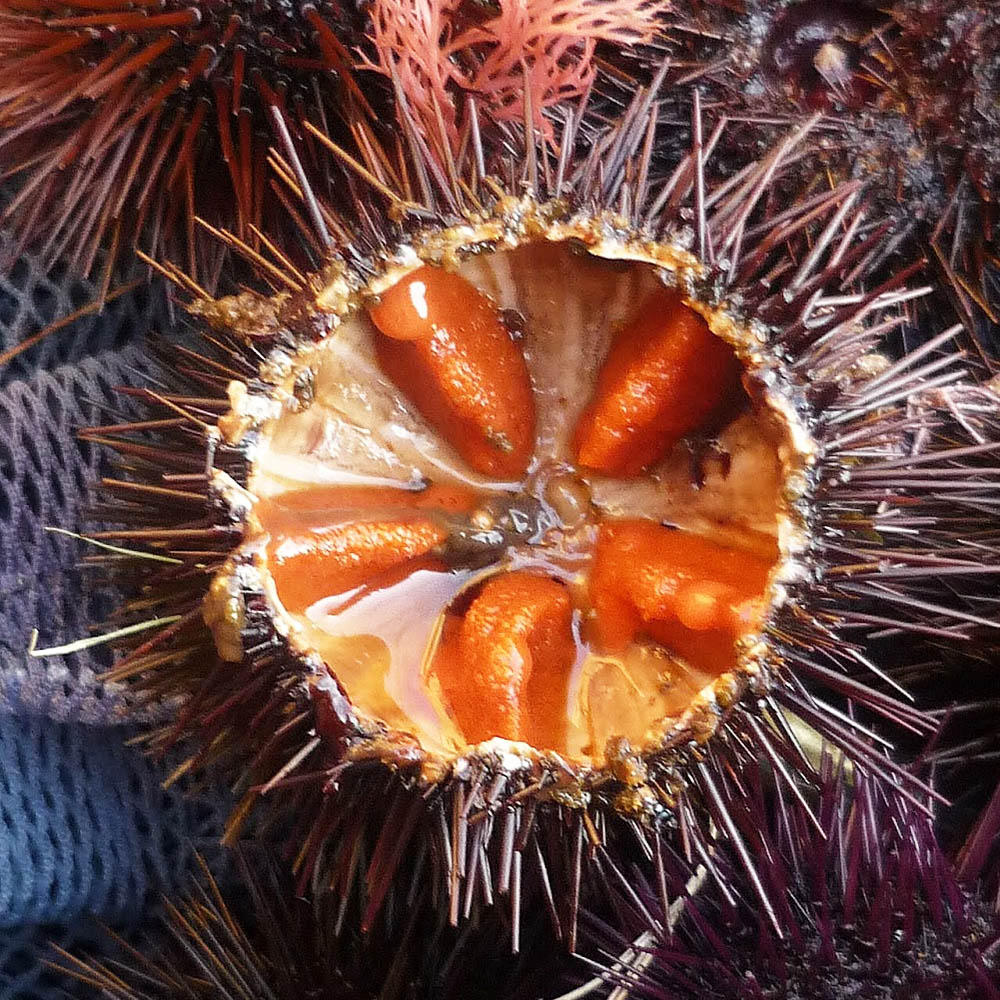
Edible sea urchin
The edible or common sea urchin (Echinus esculentus) has a large, rounded 'shell', which is actually an external skeleton, correctly called a 'test', composed of calcareous plates. It is usually pinkish-red in color but more rarely may be shades of yellow, green or purple . The shape of the test varies depending on the depth of the water; those of individuals living in shallow water tend to be more flat than those of individuals living in deep water. The Latin name for the genus 'Echinus' derives from the Greek for 'spiny'; the test bristles with many protective reddish spines with lilac colored tips .
The edible sea urchin is sought for its roe. Roe is the name for the male and female gonads, both are edible. The roe is a valuable product, the price is determined most importantly by the color (orange is the best) and the roe must be formed and firm. There is much demand for roe from Japan, were the urchin fishery is overexploited.
As stocks of sturgeon in the Caspian Sea fall near to extinction levels, the roe of the sea urchin is a substitute for caviar on the menus of exspensive restaurants, usually under its Japanese name, uni. The taste is like ""the sea without being fishy", just like caviar or briny oysters." Green sea urchins can be found in much larger numbers and have a much better taste then the edible sea urchin. But they are much smaller, and cost more to harvest
Source of information: https://www.arkive.org/edible-sea-urchin/echinus-esculentus/
1 recipes selected, Page 1 of 1






